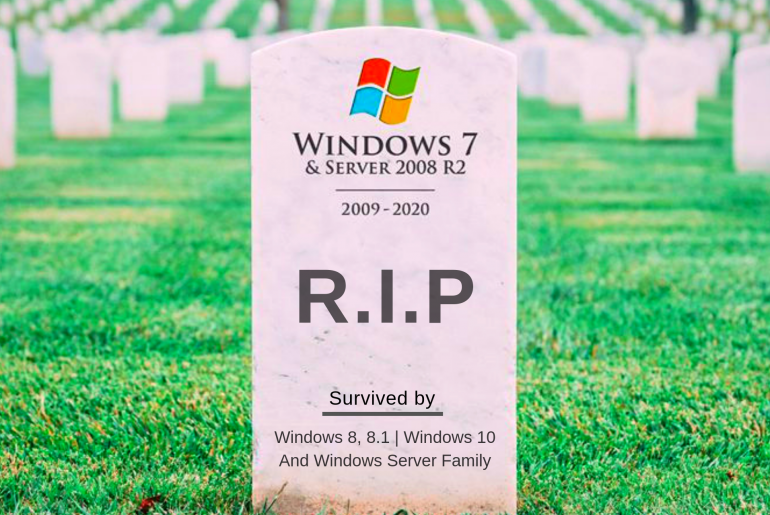A new reminder for those who are still holding on to the Windows 7 operating system—you have one year left until Microsoft ends support for its 9-year-old operating system.
So it’s time for you to upgrade your OS and say goodbye to Windows 7, as its five years of extended support will end on January 14, 2020—that’s precisely one year from today.
After that date, the tech giant will no longer release free security updates, bug fixes and new functionalities for the operating system that’s still widely used by people, which could eventually leave a significant number of users more susceptible to malware attacks.
However, the end of free support doesn’t end Windows 7 support for big business and enterprise customers. As always, Microsoft does make exceptions for certain companies that are willing to pay a lot of money to continue their support.
According to a ‘Death of Windows 7’ report from content delivery firm Kollective, as many as 43% of enterprises are still running the nine-year-old operating system, of which 17% didn’t know when Microsoft’s end of support deadline hit.
Millions of Users Are Still Using Windows 7
Want to know how popular Windows 7 is among users? Even after aggressively pushing Windows 10 installations since its release in 2015, its market share finally managed to overtake the user-favorite Windows 7 just by the end of last year.
Windows 7 was released in 2009 and, according to December 2018 stats from Netmarketshare, is currently running on about 37 percent of the world’s PC fleet, which is far ahead of its radically redesigned successor Windows 8 and 8.1 combined.
Microsoft stopped the mainstream support for Windows 7 in January 2015, but Windows users have continued to receive security updates and patches for known security issues as part of the company’s extended support, which runs for at least five years.
In March 2017, Microsoft also started blocking new security patches and updates for Windows 7 and Windows 8.1 users running the latest processors from Intel, AMD, Qualcomm, and others.
“For Windows 7 to run on any modern silicon, device drivers and firmware need to emulate Windows 7’s expectations for interrupt processing, bus support, and power states- which is challenging for WiFi, graphics, security, and more,” the company said.
“The lifecycle begins when a product is released and ends when it’s no longer supported. Knowing key dates in this lifecycle helps you make informed decisions about when to update, upgrade or make other changes to your software.”
Besides ending support for Windows 7 next year, Microsoft will also end support for MS Office 2010, Windows Server 2008/2008 R2, SQL Server 2008/2008 R2, Exchange 2010 and Windows Embedded 7 in 2020.
As for Windows 8, the operating system’s extended support is set to end on January 10, 2023.
What Should Affected Windows 7 Users Do?
If you and/or your business are still running Windows 7, you still have one year left to shift to the latest operating system.
Government agencies and big enterprises can still pay for expensive extended support to continue receiving security updates and patches from the company if they need more than a year to migrate to the newer version.
However, regular users should upgrade their operating system immediately to Windows 10 or a Linux distribution, rather than running an unpatched and increasingly vulnerable version of Windows operating system.

